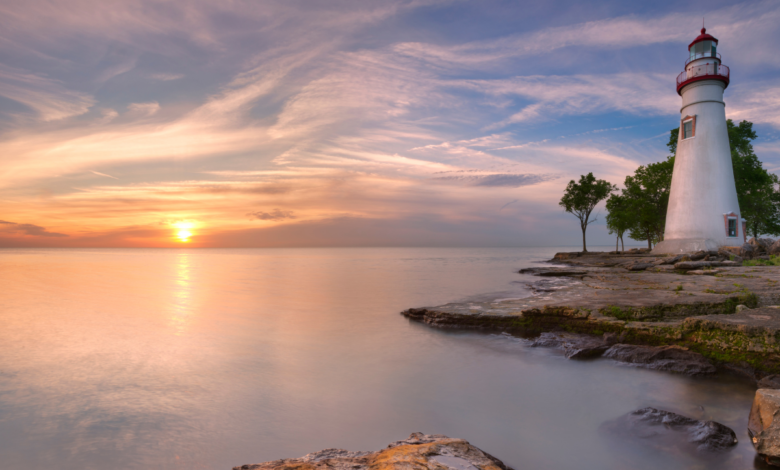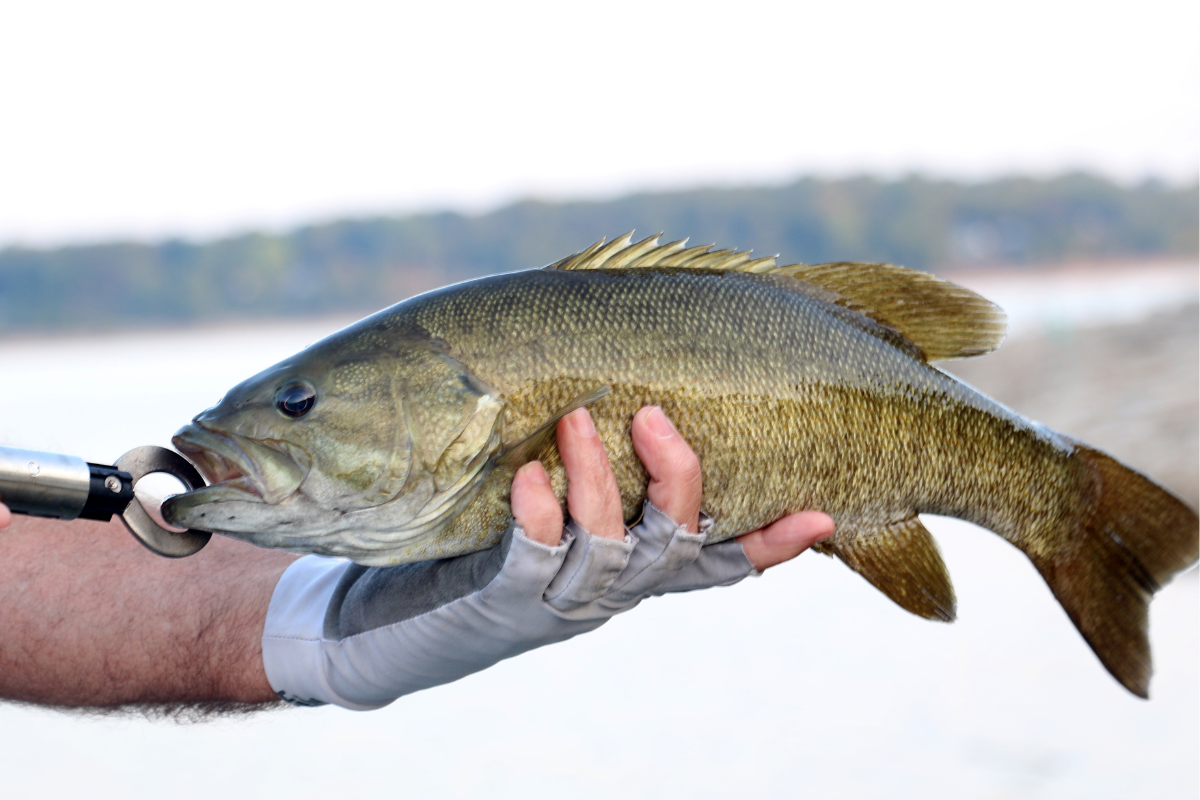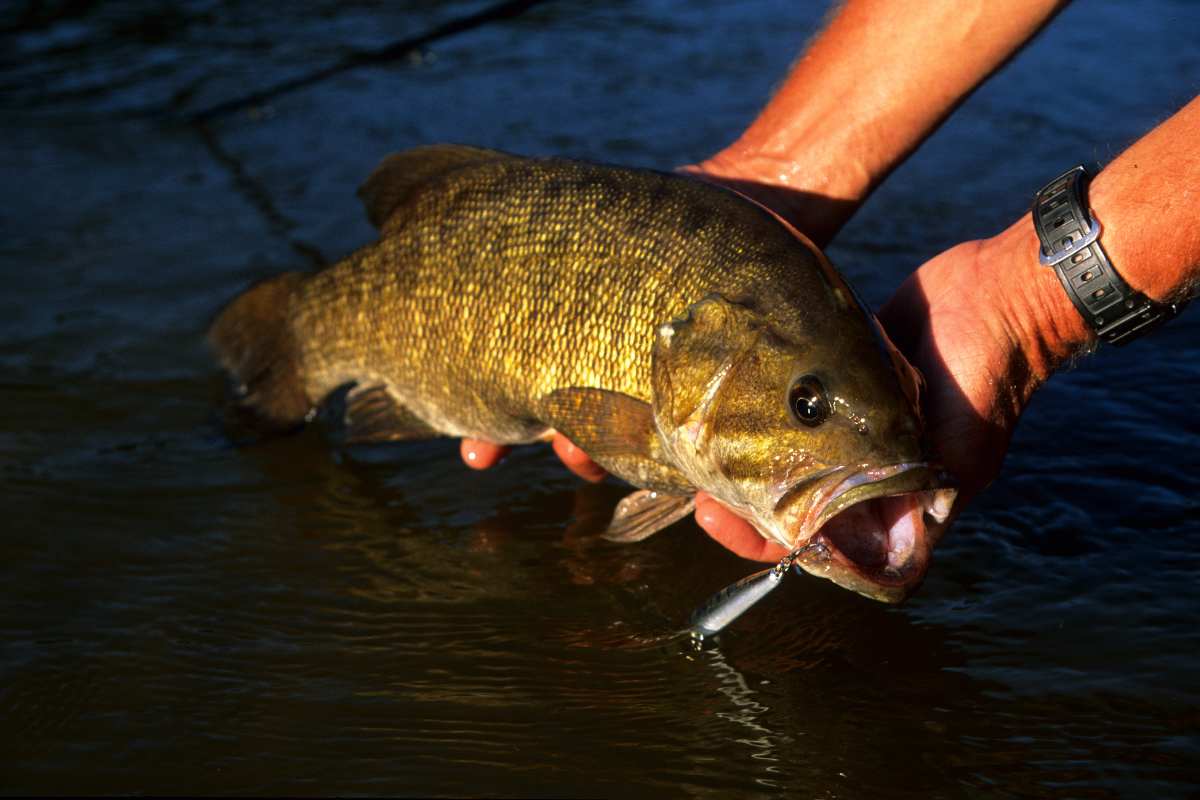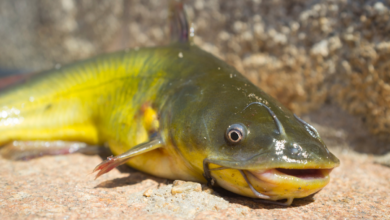Bass Fishing Lake Erie: The Complete Guide

As an avid angler who has spent many seasons targeting bass on Lake Erie, I’m often asked for tips by fellow anglers looking to improve their success rates.
This magnificent Great Lake offers world-class smallmouth bass fishing if you know where to target them and what presentations work best.
In this complete guide, I’ll share everything I’ve learned during my years of bass fishing on Lake Erie so you can experience the outstanding action this fishery provides.
Overview of Lake Erie
Spanning almost 10,000 square miles along the border of the United States and Canada, Lake Erie is the fourth largest of the five Great Lakes by surface area. This shallow, nutrient-rich lake has an average depth of just 62 feet.
The western and central basins feature soft bottom structure conducive to vegetation growth that attracts all manner of baitfish, providing a perfect environment for bass to ambush prey.
The lake consists of three distinct basins – the shallow western basin, the wider and deeper central basin, and the eastern basin which reaches depths up to 210 feet. The western basin is warmest, topping out at 75-80 degrees in mid-summer, making it a prime spot for targeting active smallmouth bass in the shallows.
Where to Fish Lake Erie
When targeting Lake Erie smallmouth, focus efforts along shallow humps, points, and underwater flats in 15 to 25 feet of water. Excellent locations include the islands area near Sandusky Bay, Metzger Marsh Wildlife Area, and around Kelleys Island.
Submerged river channels, harbors, and the 4-mile stretch linking Pelee Island to the mainland Canadian shore also hold great potential for hooking bass.
Some of my personal favorite spots include the Toussaint Reefs just east of Turtle Creek Wildlife Area, the Camp Perry firing range flats, and the friendly confines of West Harbor.
I’ve found that areas with a mixture of rock and scattered weeds hold the most fish. The underwater humps and drop-offs around Rattlesnake Island are also bass magnets.
Basically anywhere that baitfish gather and structure exists, hungry Lake Erie bronzebacks will set up ambush points. Focus on transitions and irregularities in the bottom contour rather than featureless expanses of open water flats.
We’ll be talking quite a bit about walleye too! Check out Ronnie Rhodes pullin in walleye on Lake Erie in this episode of Larry Smith Outdoors on CarbonTV!
What Can You Catch?
Lake Erie holds excellent populations of smallmouth and largemouth bass, yellow perch, steelhead, walleye, musky, white bass, and channel cats. The most targeted species by far are the hard-fighting smallies that reach sizes over six pounds.
In fact, the biggest smallie ever caught in the lake was a 16 year old 10.15 pounder.
From late spring through summer, these bronze bombers can be found shallow, providing incredible sight fishing opportunities. While legendary for its smallmouth fishing, Lake Erie also kicks out some jumbo perch for those willing to hunt them down.
Yellow perch gorge on emerald shiners and other small baitfish, growing upwards of 15 inches long. A 2-pound slab feels like hooking a mini submarine on ultralight tackle!
Many anglers also target the lake’s walleye when the spring night bite turns on. Vertically jigging blades baits along the western basin slopes produces fast action and tasty filets. Hefty steelhead migrate up tributaries from September through May as well, providing a shot at these acrobatic fish on the fly rod.

Lake Erie Smallmouth Fishing
The smallmouth bass fishing on Lake Erie’s western basin is nothing short of amazing. These aggressive fish constantly patrol shallow rock piles and submerged humps terrorizing schools of emerald shiners and gizzard shad.
During the summer, I’ve witnessed incredible topwater bites with bass attacking surface lures like tiny tarpon. Large soft plastic swimbaits and crankbaits resembling baitfish also produce plenty of hookups. Just be prepared for the dragged into the abyss sensation when a 5-pound-plus smallie inhales your lure!
As with most bodies of water, seasons dictate how I target these dynamic fish. In spring, I start shallow using suspending jerkbaits or topwater frogs around emerging weeds and woody structure. Depending on the density of the brush early on.
As the water warms heading into summer, the best action shifts to outside weed edges and mid-depth rock humps holding baitfish. Here swim jigs dragged over contour changes do major damage to hungry bucketmouths.
While many anglers struggle when summer heat sets in, I’ve found bass continue gorging on Lake Erie’s abundant emerald shiners during this period.
Repeatedly casting unweighted finesse worms to shallow flats and letting them sink on a slackline entices inactive smallies to strike. I mix retrieves until figuring out the cadence they prefer on a given day.
Once fall arrives with its dropping water temps, targeting the 12 to 18 foot zones with diving crankbaits and countdown Rapalas is my go-to technique. Bass tends to bunch up on well-defined structures like the old railroad beds and submerged roadways traversing the lake. Vertical jigging blade baits or live bait rigs also connects with post-spawn and juvenile fish.
5 Tips for Lake Erie Bass Fishing
After years of trial and error, I’ve dialed in presentations and locations that produce consistent results on Lake Erie. Here are my top smallmouth bass fishing in Lake Erie tips:
- Fish shallow early and late when bass are actively feeding. Focus on areas with rock, wood, or vegetation near deeper water. Target the thickest weed tangles or rock piles other anglers avoid – lunker bass love ambushing prey from these spots.
- Match lure size to the forage base. For example, throw 5-6 inch swimbaits when shad are present. Downsize to 3 inches when small emerald shiners are the prime food source. Keeping bait profiles proportional makes getting a bit easier.
- Target mid-depth structure during brighter conditions. Bass slide off shallow humps and reefs into the 10 to 20 foot depths when the sun is high. Drop Shot rigging with dragging methods is deadly for tempting suspended smallmouth here.
- Pay close attention to weather and water conditions. Incoming storms with wind and cloud cover spark major feeding frenzies in shallow zones. Stable high-pressure causes lethargic fish. Check wave direction – fishing the leeward side of the structure concentrates bait.
- Always make repeated casts to high percentage areas – even if bass initially follow lures without committing. These fish are constantly on the move and may follow out of curiosity before striking.
Now let’s expand on those tips for having your best day ever battling Lake Erie’s amazing bass fishery.

Best Finesse Tactics for Fussy Smallmouth
We’ve all been there – the weatherman misses the mark with the forecast or a passing front leaves finicky bass staring blankly at offerings they’d normally attack without hesitation. When reaction bites fade, quickly downsizing gear and finesse tactics designed to gradually trigger strikes become critical.
My weapon of choice for tempting neutral smallmouth is the 3 inch grub on 1/16 or 1/8 oz lead jighead based on depth and wind velocity. Keeping these subtle trailers near bottom while imparting slight shakes, pauses, and changes in retrieve speed proves highly effective.
I prefer dark colors like black, green pumpkin, or brown backs in stained water, while translucent silver glitter or pearl patterns shine in clear conditions.
In lakeside tournaments when bass abandon their cover to suspend mid-water, nose-hooking 6 inch power worms onto 1/4 oz underspins also covers crucial depth ranges.
Let these baits sink for 30 seconds after long casts before slowly turning the reel handle to activate their tantalizing spiral fall. More often than not, curious smallies home in to inspect the commotion. Seeing your line jump or sensing extra weight hints a deadsticked hookset will drive home!
One of the most critical finesse strategies focuses more on where you cast rather than specific lure selection. Pick apart every piece of structure with fan casts, incrementally moving along until finding the bass hideout.
Many times schools of bait stack up on subtle contour changes or isolated waypoints fish use to corral prey. Thoroughly probing with versatile jigs keeps you in the bass catching game when nothing else works. Master finesse tactics and you’ll catch fish when other anglers call it quits!
FAQs
What is the best time of year to catch smallmouth bass on Lake Erie?
Late spring through early fall provides peak action, with the hottest bites usually occurring mid-June through July after spawning season. This period coincides with baitfish flooding the shallows and smallmouth going on feeding frenzies to fatten up for the cold months ahead.
The worst time is during winter months when water temperatures drop below 50 degrees and open water options fade without using an ice auger!
When is the best time to target prespawn bass on Lake Erie?
The early prespawn period starting as soon as ice recedes through April is prime time for tangling with Lake Erie’s biggest smallmouth bass. As water temperatures push from the mid 40s into the 50s, mature females stage and feed heavily before moving shallow for spawning.
Focus efforts from past harbors and tributary mouths out to emerging weed edges and structure in 6 to 12 feet of water. Slow rolling swim jigs, suspending jerkbaits, and umbrella rigs covering large areas help pinpoint migratory pathways and areas prime for intercepting bronzed sows packing roe.
What pound test line should I use?
Since there are zebra mussels and other snags, I recommend at least 12 lb fluorocarbon line or 17 lb test monofilament. Braided lines from 30 to 65 lb test also see plenty of action for yanking hawgs away from sharp edges or mussel encrusted structure.
Having a 7 foot medium heavy rod with a responsive backbone helps drive hooks home while battling current and bulldogging bass around cover. You need strength and abrasion resistance for pulling large bass out of gnarly hideouts. I usually tie on a 2 to 3 foot, 10 lb fluorocarbon leader to help entice tentative biters.
What are the best lures/presentations for hooking trophy smallmouth over 5 lbs?
Big swimbaits like 6-inch jerk shads and paddle tails rigged weedless work well when targeting larger bass focused on the juiciest prey. Just make sure to match profile and size to the buffet – downsize accordingly if baitfish average 3 inches.
Also effective are medium and deep diving crankbaits covering 8 to 18 feet to reach ambush zones off primary structure pieces. And never overlook a flipping jig with full-sized trailer probing pockets behind boulders, stumps, and lay down logs during summer’s low water period – the biggest smallies hunker in woody lairs!
Final Thoughts
Lake Erie offers world-class smallmouth bass fishing that should be on every freshwater angler’s bucket list.
Just be sure to pay close attention to forage base, structure, weather patterns and water conditions to unlock this fishery’s incredible potential.
With the tips outlined above you’ll be hooked up with bucketmouth bass in no time! Tight lines, friends. I’ll see you on the water bass fishing in Lake Erie somewhere between West Sister Island and the Cleveland Harbor sea buoy.



